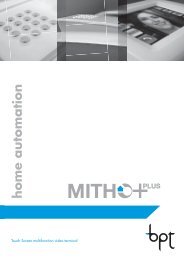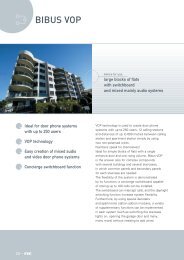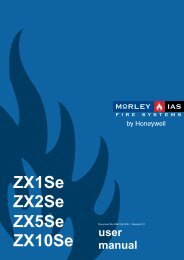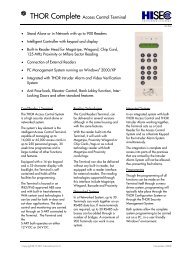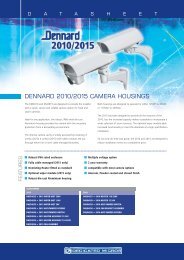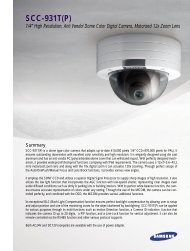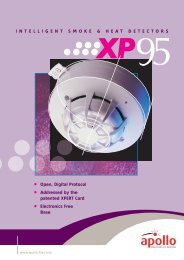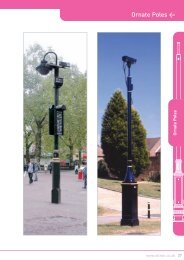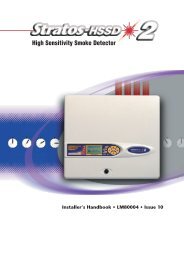Morley Fire Panels Installation Manual - Smiths Technical Systems
Morley Fire Panels Installation Manual - Smiths Technical Systems
Morley Fire Panels Installation Manual - Smiths Technical Systems
Create successful ePaper yourself
Turn your PDF publications into a flip-book with our unique Google optimized e-Paper software.
ZX <strong>Fire</strong> Alarm Control <strong>Panels</strong> MORLEY-IAS<br />
• The ZX5Se <strong>Fire</strong> Alarm Control Panel supervises and charges the two 12-volt batteries that make<br />
up the standby power source. Batteries are available commercially and should be of the sealed,<br />
lead-acid type. Suggested suppliers for the Batteries are Yuasa and Power-Sonic.<br />
• Use the current rating chart, along with the following formulae, to determine the size of the<br />
batteries to satisfy the specific installation conditions.<br />
• Batteries with capacity greater than 24Ah should be installed in a separate enclosure that is<br />
suitable for <strong>Fire</strong> Protection Use such as Battery Box – 797-078, with wiring connected to the<br />
panel through conduit.<br />
4.1 Sensor Current Calculations<br />
4.1.1 Quiescent Load<br />
• Refer to the manufacturers’ published data sheets for the supply current required by each sensor<br />
type in normal mode. Take into account the figures quoted for whether the detector LED flashes<br />
when the signalling device is addressed – refer to the Commissioning manual for details of the<br />
Setup parameter to turn this blinking on / off.<br />
• Calculate the total current required by the sensors connected to all signalling loops. This should<br />
be based on the quantity of each device installed and the supply current required for the device.<br />
4.1.2 Alarm Load<br />
• Refer to the manufacturer’s published data sheets for the supply current required by each sensor<br />
type.<br />
• Calculate the total current required by the sensors connected to all signalling loops. This should<br />
be based on the quantity of each device installed and the supply current required for the device<br />
as above.<br />
• When a fire alarm condition is registered, the panel will turn on the sensor LED indicators for the<br />
first four sensors that register an alarm. Refer to the manufacturers’ data sheet for the current<br />
supply required for these LED indicators.<br />
• Calculate the total current required by any loop-driven sounders or output modules active in alarm<br />
conditions. NOTE: The LED of all activated System Sensor output modules will be turned ON.<br />
4.1.3 Adjustment Factors<br />
• The figures calculated for sensor current, above, should be multiplied by an adjustment factor of<br />
1.8 before being used in the Current Rating Chart.<br />
4.2 Local <strong>Systems</strong> Ampere Hour Calculation<br />
• Use the following formula to calculate the size<br />
of batteries required for the installation. C = Total A * 24 hours<br />
• These installations require a standby period of<br />
24 hours plus thirty minutes of alarm operation<br />
at the end of the standby period.<br />
D = Total B * 0.5 hours<br />
Battery Ah = 1.25 * (C + D)<br />
<strong>Installation</strong> <strong>Manual</strong> Document No. 996-174-000-1, Revision: 01 Page 35



